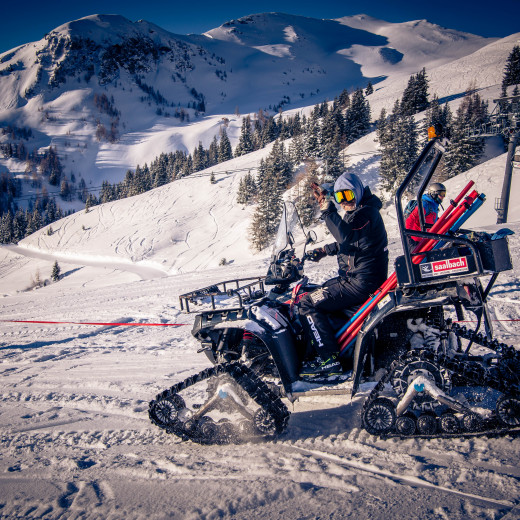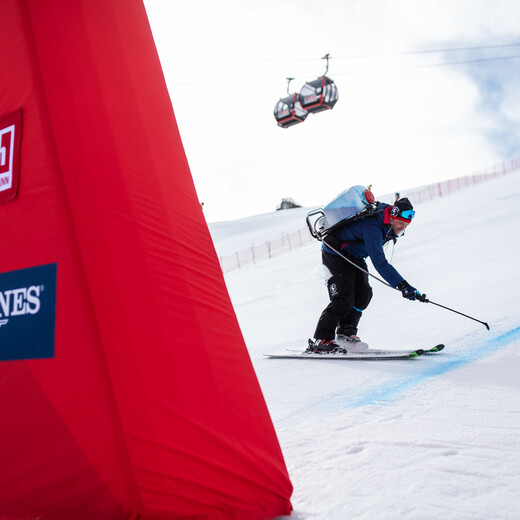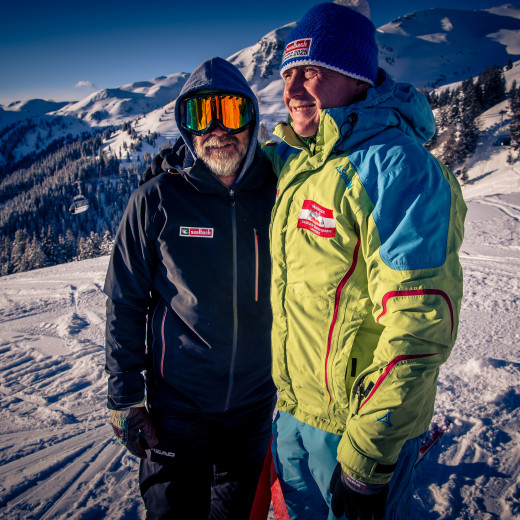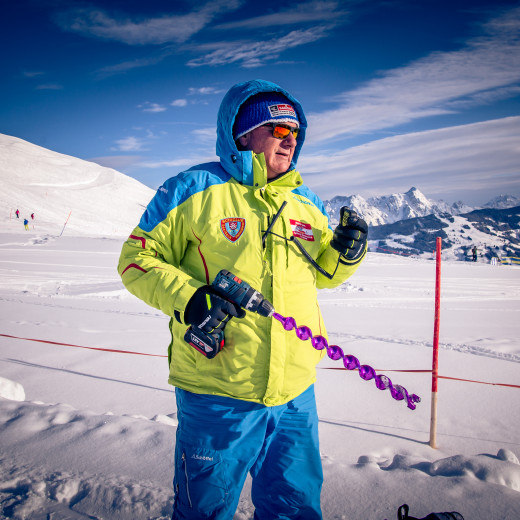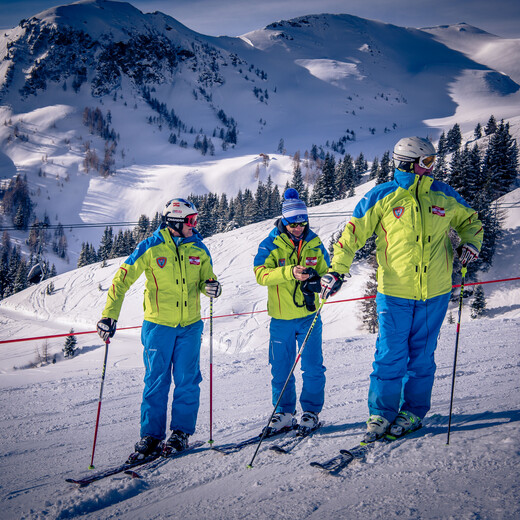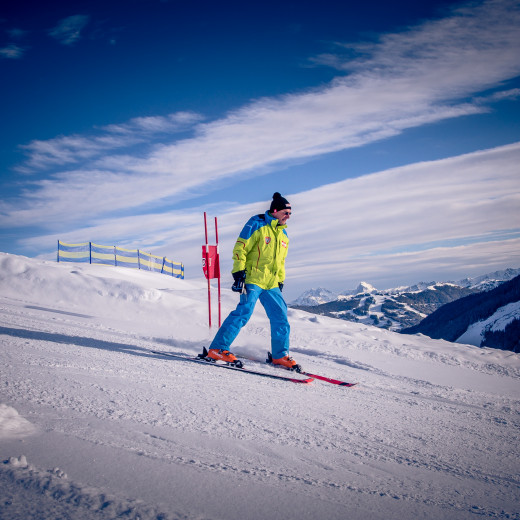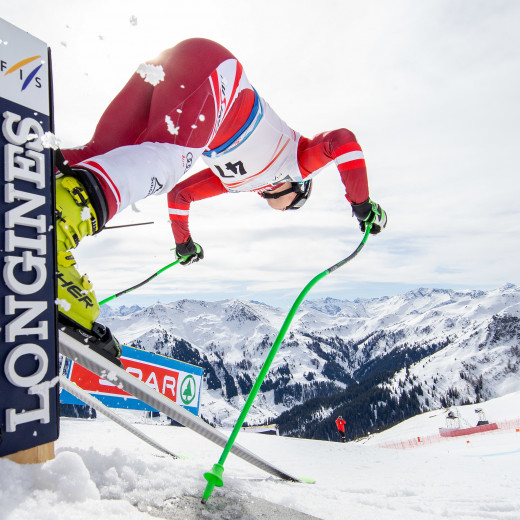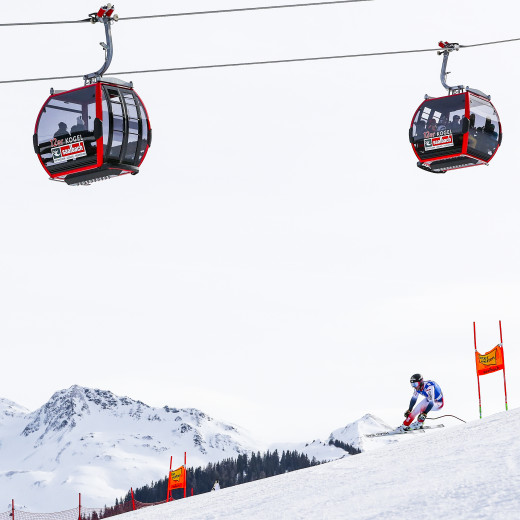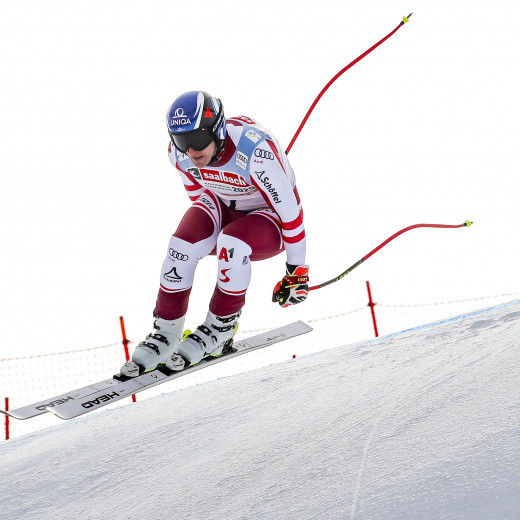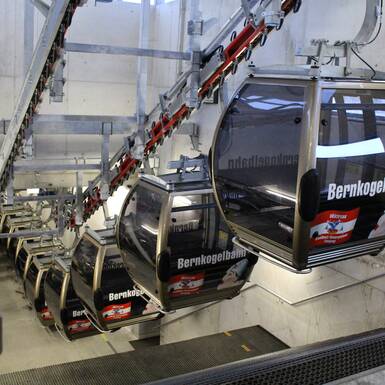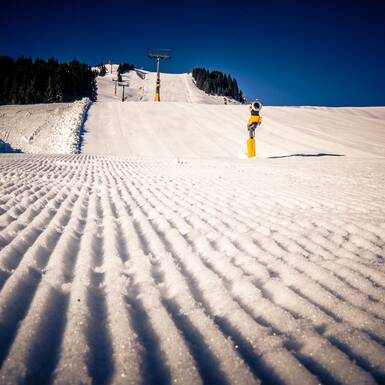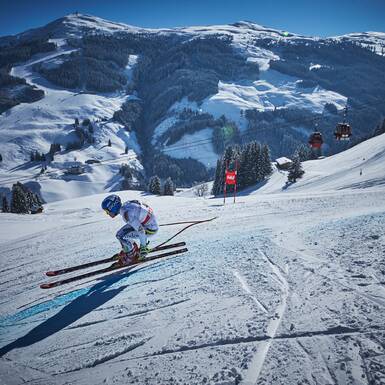- Backstage
Backstage at the Ski Club
The sound of "Rider ready? 3... 2... 1... Go!", echo on the perfectly prepared race piste on the Zwölferkogel and a ski racer powerfully catapults out of the start gate and the clock is ticking. The Saalbach Hinterglemm Ski Club members are experienced in organising World Cup and European Cup races, so a World Cup Super G and a Downhill race at short notice runs smoothly and without a hitch. Nevertheless, the race preparation until the first forerunner leaves the gate is substantial. I was on the starting team of the ski club for a few years and visited my former colleagues to take a look behind the scenes of the Ski Club for the Saalbach Stories.
With 103 trained and certified referees, the Saalbach Hinterglemm Ski Club is the largest in the province of Salzburg. More than 50 races per (normal) winter are organised by this experienced team. "The majority of the races are tourist races, such as company or club races. A team of about 15 to 20 judges is sufficient. For a European Cup or World Cup race, of course, we need many more volunteers, material and time," explains Bartl Gensbichler, the long-standing President of the Ski Club, who is at the start as race director, assigning his team to the various posts and at the same time supporting the "sliders". With more than a hundred experienced referees, they are well prepared for the Alpine World Ski Championships 2025.
Slide party, gates and the MEK
The "slide party" whizzes through the gates in a snowplough or by sliding sideways after the runner in order to move loose snow out of the ideal line. A dangerous and stressful job, as the speed of the sliders is incredibly high. As the next racer is about to start, they have to leave the course in good time so that they don't obstruct the racers. Their work, however, maintains a good slope, even for higher starting numbers. Because when they slide, they also smooth out bumps and grooves. Gate guards are stationed at the edge of the course. They meticulously monitor the gates assigned to them and note down every incorrectly passed gate. They also immediately report a fall or broken pole. At this "start-stop" no runner is allowed to leave the start gate until the course is cleared again. A separate squad - the "Mobile Operations Command" - is then immediately on the spot with replacement poles, flags, a shovel and drill to replace the faulty gate. The FIS decides who sets the course at World Cup races. The barrier fence prevents the public from entering the race course and, if the worst comes to the worst, keeps the skier in the area where he or she falls. The faster the races, the more safety fences are required. The construction team for a World Cup Downhill is busy for several days simply installing these safety fences.
Female power in timekeeping
The start is connected to the finish via radio and when the start antenna is triggered, the time is ticking for Stefanie Hofer. She monitors the timekeeping and makes sure that every runner is recorded to the hundredth of a second. Nerves of steel are needed, as there are often two or three runners on the course at the same time. Of course, every run has to be documented in case there is an appeal. On the side, Steffi manages the Ski Club office with her mother Ulrike. Here, the registrations come in, the team is divided up for races, they communicate, manage and organise the memberships and print out all the start and result lists. The last runner is just racing to the finish line and the piste is already being prepared for the next day.
ÖSV Speed Training Centre
Frozen fingers slowly begin to thaw again and there is a short debriefing. " Saalbach Hinterglemm has the ideal race mountain with the Zwölfer, the 12er KOGEL Bahn a top modern facility and a super cooperation with the lift companies," Bartl Gensbichler enthuses. The Zwölferkogel has been the ÖSV speed training centre for three years now. The building of the new 12er KOGEL valley station also has changing rooms and seminar rooms for this purpose. "Fritz Steger is not only my deputy, but also the Ski Club's piste manager - he is our man on the mountain. While I use my network in ski racing to bring other major races to Saalbach Hinterglemm, Fritz takes care of the perfect set-up of the race piste from autumn onwards. He is also at the Zwölfer early in the morning to close off the course, re-ice the piste or remove freshly fallen snow from the race track with his team. As a one-man show, he also coordinates the training of the top teams and, in cooperation with the lift companies, every ski star finds perfect conditions here. There is no lack of young talent among the referees, because, as Bartl Gensbichler assures me: "Everyone here knows that the village depends on skiing. And so the young people can also contribute something. They are enthusiastic at the start of the many races. Like all the members, of course, they are volunteers and many of them take days off to do their work for the Ski Club. However, when we then host another major event on the Zwölferkogel ourselves, the experience we gain in the many small races pays off."

